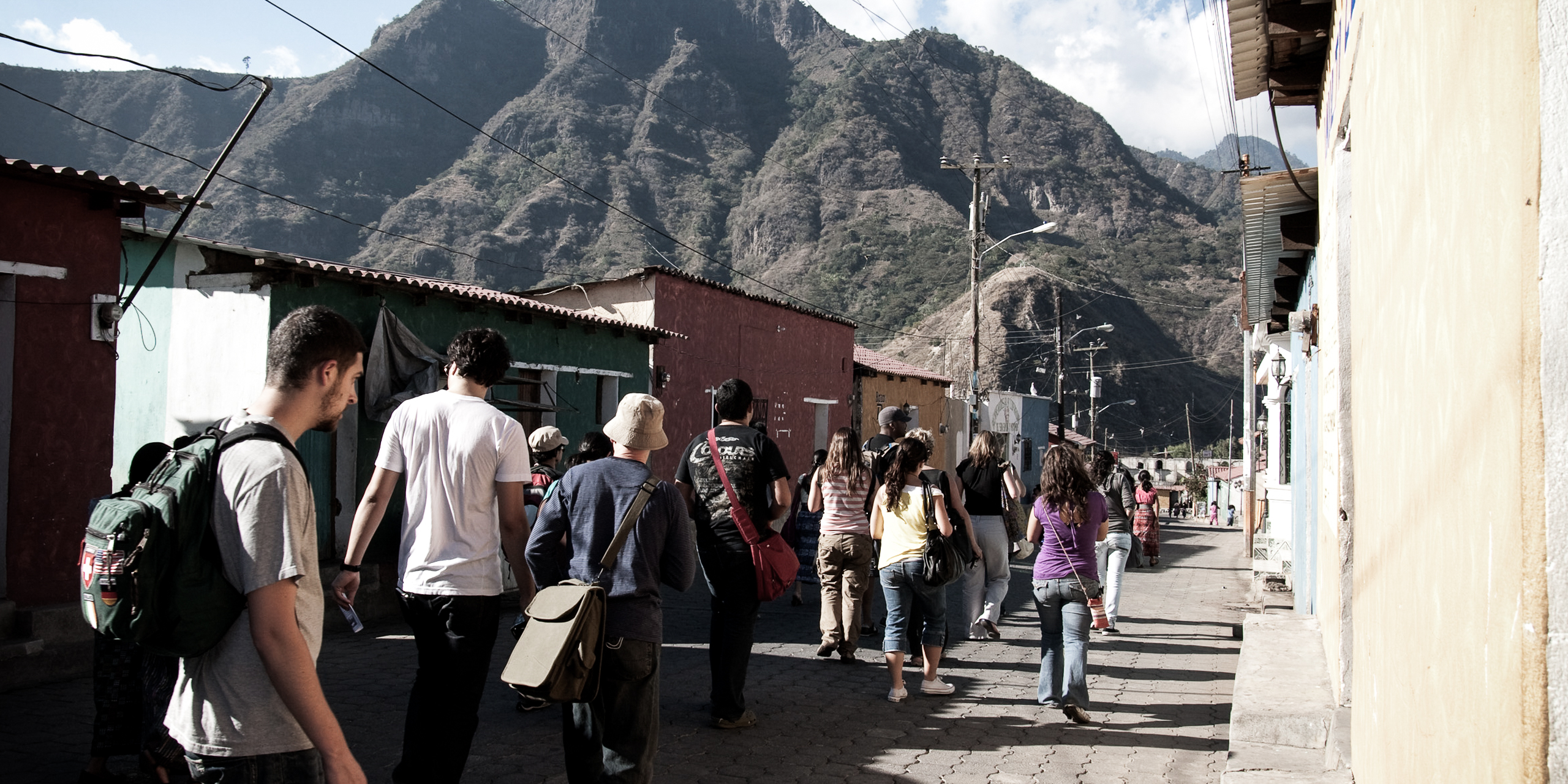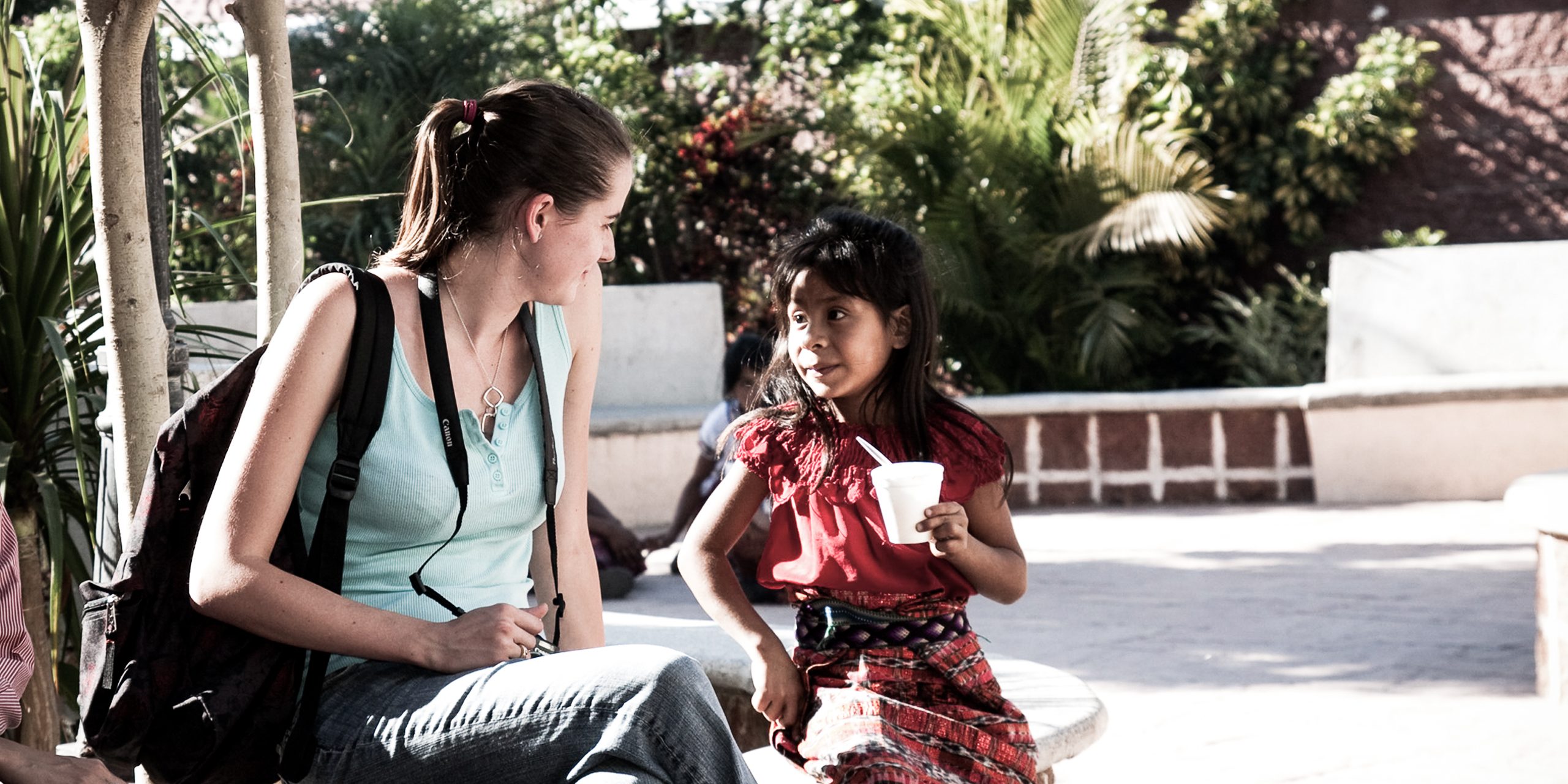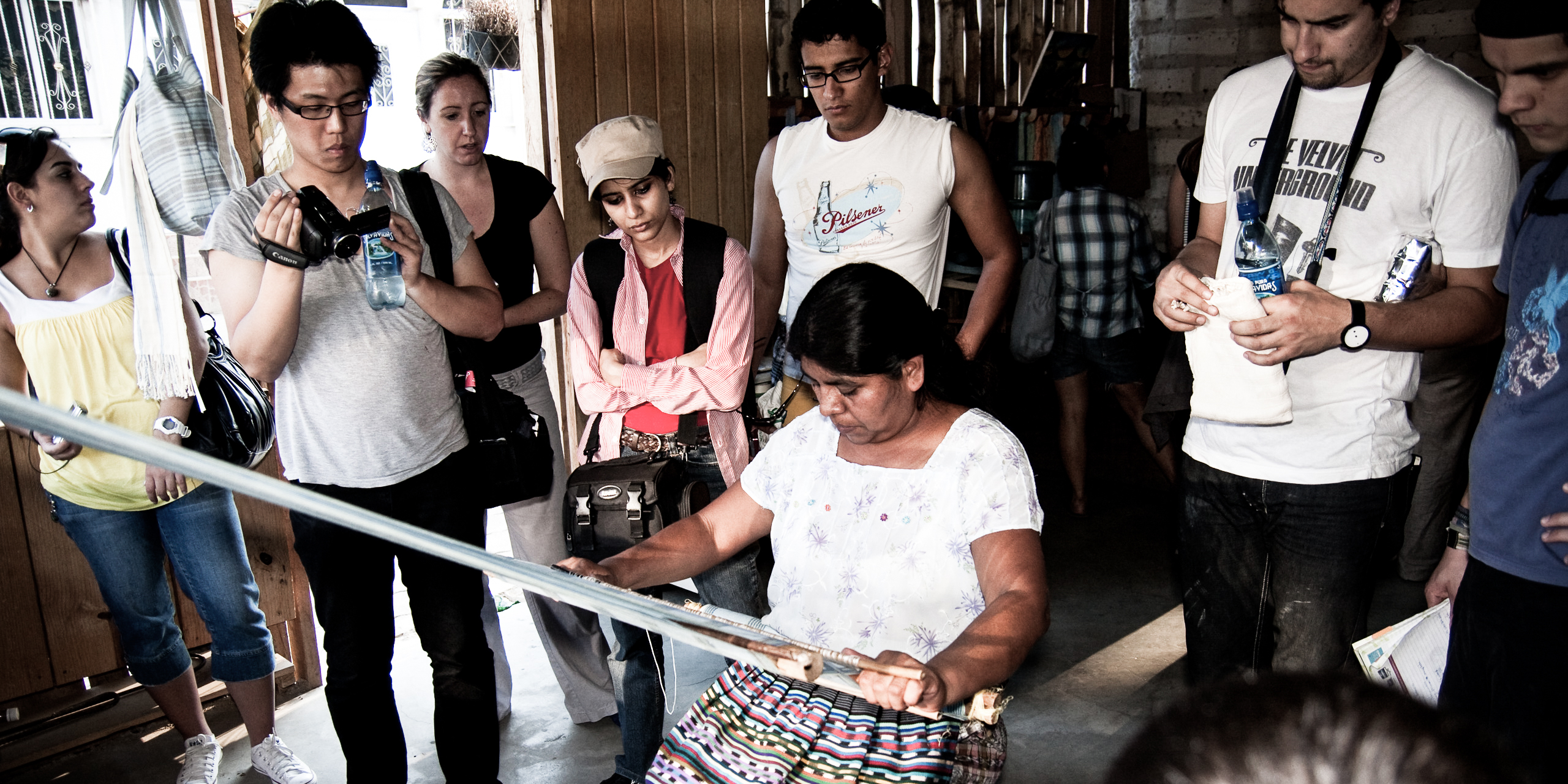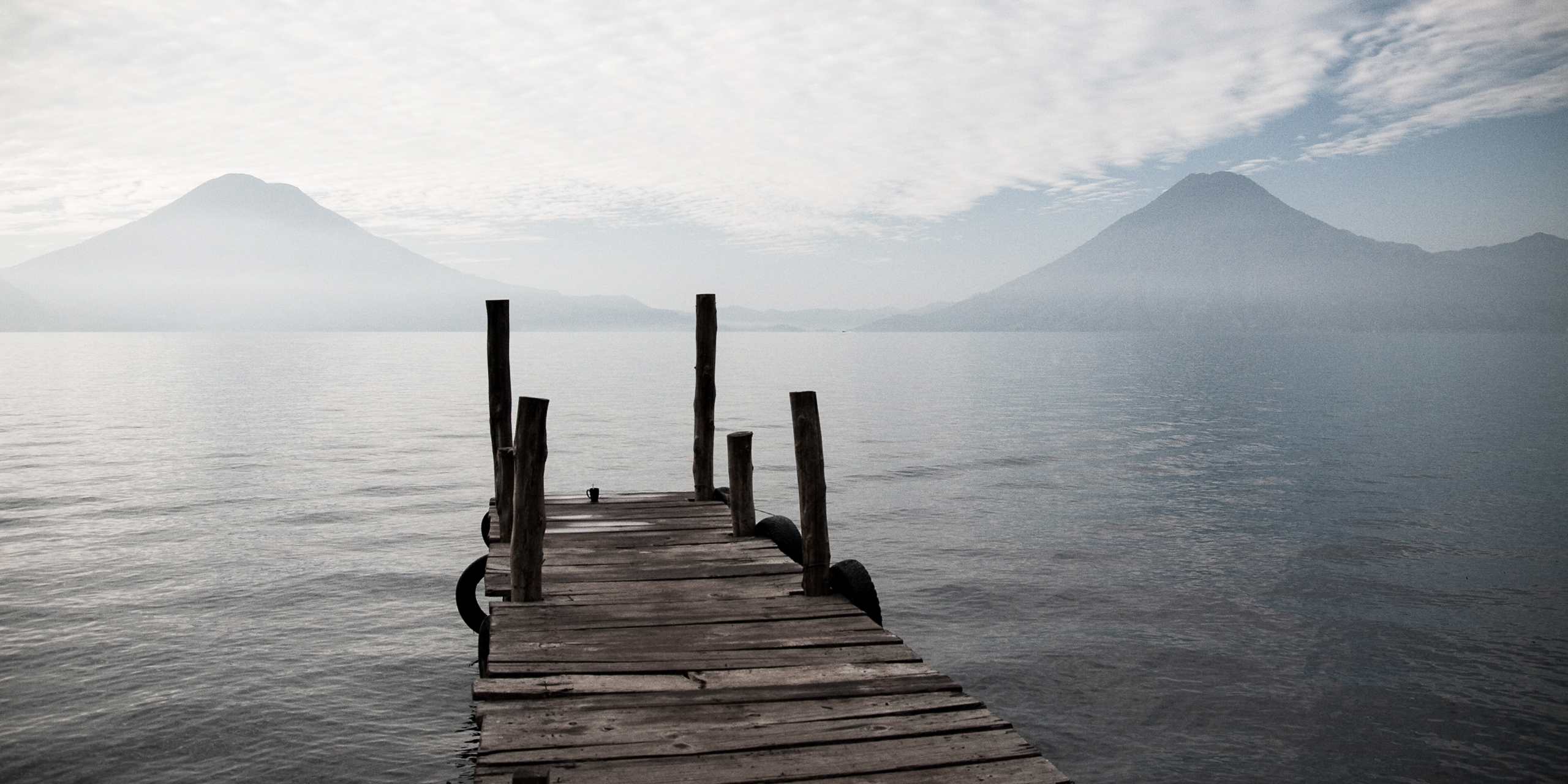Creating Social Value Through Design
- Social Entrepreneurship
- Sustainable Development

Spring 2010
The students in Creating Social Value Through Design were challenged to bring their unique skills and approaches to formulate a concept designed to restore and sustain Lake Atitlan and its people.
Lake Atitlán is an incubator, a test bed, a microcosm of what responsible commercial growth can be – it’s of a size that we can get our heads around. Done right, we can effect change relatively quickly.
– Steven Montgomery, Graduate Industrial Design Faculty
Outbreaks of cyanobacteria have tipped the ecological and socio-economic balance of Guatemala’s Lake Atitlán, periodically transforming the picturesque body of water into a toxic green mixture, and wreaking devastation on a local population whose livelihood depends on lake as a resource as well as the tourism it generates. Students in Creating Social Value Through Design combined their unique skills and approaches to find a way to restore and sustain Lake Atitlán and its surrounding communities.

Design Brief
Tourism is the second largest source of revenue in Guatemala. The city of Sololá, with its picturesque Lake Atitlán—situated in a caldera in the Guatemalan highlands and famous for its three volcanoes, Atitlán, San Pedro and Tolimán—is the second most-visited destination by tourists to Guatemala. In recent years, the ecological balance has been tipped and the lake now suffers from periodic outbreaks (blooms) of cyanobacteria, a contaminant whose toxicity is likely yet unknown. What is known is that cyanobacteria – caused by a combination of non-organic fertilizers, raw sewage, erosion, phosphorous-containing soaps, and – exacerbated by the tourism industry – transforms the clear blue water into a murky, foul-smelling “pea soup”. More frequent blooming has led to a 40% decrease in tourism, which, in turn, has had a harsh effect on the private sector that run hotels and restaurants, but particularly so on the Maya residents of the many lakeside villages, whose economic well-being depends on tourists, especially sales of their unique hand-woven textile-based products. Faced with this “wicked problem,” the students in Creating Social Value Through Design were challenged to bring their unique skills and approaches to formulate concepts designed to restore and sustain Lake Atitlan and its people.
About our partners
“Creating Social Value Through Design” is the first Designmatters class to be supported by a grant from the National Collegiate Inventors and Innovators Alliance, a foundation that supports technology innovation and entrepreneurship in higher education to create experiential learning opportunities for students and successful, socially beneficial businesses.
Students in this class partnered with Asocación Ati’t Ala’, a community development organization in San Juan La Laguna, led by executive director Mónica Berger, that seeks opportunities for breakthrough change on several interrelated fronts.

Research and Project Development
Inspired by Product Design for the Developing World —a course, led by Dr. Ken Pickar, visiting professor of mechanical engineering at the California Institute of Technology, which students from Art Center and Rafael Landívar University in Guatemala City have participated in for the past five years—”Creating Social Value Through Design” was Designmatters’ first opportunity to bring cross-disciplinary expertise into a studio setting for a human-centered project anchored in design thinking.
Two key areas of investigation and ideation the students addressed were diversifying artisans’ products and expanding markets locally, regionally and internationally. The students also contributed strategy, branding and communication for the nascent Atitlán Azul certification initiative, which addresses the environmental breakdown and dangerous bloom of cyanobacteria threatening the Lake and the livelihood of its people.
Early in the term, the class travelled to Guatemala following an itinerary largely created by Designmatters’ Mariana Amatullo, where they teamed and worked nightly with their sister class from Rafael Landívar University (led by Ovidio Morales and Juan Carlos Noguera) and met with Mónica Berger and several of her associates from Asocación Ati’t Ala’, who shared their inside knowledge of Lake Atitlán’s culture, government, tourism industry and the scientific facts behind the Lake’s contamination. In touring the lake and its villages, the class also learned about the difficulties in getting locals to change their ecological habits; visited a recycling center in San Marcos; met with a gallery owner in Santiago who sells one-of-a-kind paintings to tourists; visited an all-girls high school in San Juan La Laguna whose curriculum focuses heavily on the environment; conducted research in the tourist destination village of Panachel; toured a new vocational center in Santa Cruz; met with a 65-year-old deaf Maya woman who makes a living by selling hand-made weavings; and, after considerable debate over whether doing so would pose any potential health risk, jumped into Lake Atitlán to experience swimming in the waters of the famous lake.
After returning from Guatemala, the class focused on developing a variety of projects to help identify opportunities for sustainable development in Lake Atitlán. The students quickly discovered the difficulty inherent in tackling a problem that touches on environmental, economic, social and historical issues. The need to refine each project’s focus became particularly apparent after the midterm project presentations, when USC professor Adlai Wertman addressed the group and asked, “So, what exactly is the problem?” After several more weeks of reassessing, refocusing and refining, and with the feedback provided by ongoing communication with stakeholders in the lake and the contributions of the Landivar team, the students finalized their projects.
Outcomes
In developing projects that complemented one another, the entire class worked toward the goal of restoring and sustaining Lake Atitlán and its people. The projects were founded on local exploration and observation as well as advice from and observation of locals and business professionals. What the class proposes is Atitlán Azul, an initiative to engage and mobilize the whole Lake Atitlán community by co-creating principles, programs and products for sustainable life using the acute pollution problem as catalyst. The initiative includes six projects that take into account all stakeholders—tourists, the Maya, expatriates, business owners – who are affected by the Lake’s acute pollution.
We all spend a lot of time discussing and debating what the world should be like, but rarely do we ever take action. Our class had the chance to conduct field research in Guatemala, and upon our return, come up with ways we could contribute to ending the problem in Lake Atitlán. Instead of spending three months working on a hypothetical problem, we spent that time on something that would really impact the situation and hopefully bring a positive change to real people. All of a sudden, I wasn’t a student working in a classroom in Pasadena, but a person with responsibility and potential.
Jonathan Goldman, Advertising Student
Projects
Jonathan Goldman (Advertising) and Mariana Prieto (Product Design) developed a fresh identity for Atitlán Azul, the Lake’s eco-certification system, and proposed a new outlook on a partnership with Lake tourism to promote eco-tourism and create participatory tourism around the Lake. They created the tag line “A Culture of Harmony,” to reflect a diverse community that lives in harmony with the planet as well as with each other.
James Chiang (Graduate Industrial Design) developed the Maya Tourist Guide, a GPS smart phone guide tool. Upon arrival, a tourist may rent a GPS smart phone guide at a hotel or kiosk that is pre-loaded with a database of current and topical sightseeing tours, restaurants, hotels and daily local info. To help and promote socio-economic- and eco-conscious tourists during their stay, the tours will feature activities and places that specifically fulfill the ecological and cultural requirements of the Atitlán Azul charter.
Tarangini Jindal (Graduate Industrial Design) developed A Walk with the Maya, a curated street walk as a way of experiencing the Maya’s past, present and future as well as their stories and mythologies. Designed to preserve and display the culture and heritage of the Maya people around Lake Atitlán, this “street museum” will extend the tourist’s experience beyond scenic beauty and souvenirs.
Sara Moore (Graduate Media Design) developed Weaving Wisdom, storytelling and weaving workshops that focus on the weavings of local Maya, a modern-day tradition that stretches back 300 years. The patterns and colors the Maya use in their weavings contain fascinating stories and myths, yet these narratives are not shared with the common tourist. These workshops will create genuine person-to-person interactions by getting tourists involved in weaving, while educating them about the cultural significance behind the weavings.
Denise Diaz (Product Design) developed Maya Color Theory, a creativity guidebook and workshop to expose local weavers basic design and color theory. The workshops and accompanying manual are designed to bolster product diversification by opening the weavers’ minds to new products while maintaining a respect for their culture and creativity.
Jules Moretti (Graduate Industrial Design) developed Eco Link, a system for assigning unique Radio Frequency Identification (RFID) tags to products that are uniquely created by local weavers who are true to Maya traditions and use Fair Trade. Designed to expand and diversify the market among the Lake’s weavers and to establish product value to world-wide customers by promoting genuine Maya-made products, these hidden tags would be encoded with information that includes background information on the products’ origin, design legacy and producer, as well as the contribution their purchase makes for the local ecology.
Emmanuel Darden (Graduate Media Design) developed Pila Park Project, an initiative that promotes an eco-friendly laundering solution for the Lake Atitlán community. The project aims to change the reliance of toxic household chemicals that affect the delicate ecosystem of the Lake, while preserving cultural traditions and empowering communities with new economic opportunities. The project proposes local manufacturing of a new “Para Pila” detergent, an organic alternative to nitrogen- and phosphorous-rich detergents, as well as building “Pila Park”, an open-air public laundry center with an adjacent playground, which would serve as an attractive and nearby alternative to washing clothes directly in the Lake.

Beyond the Studio
The Creating Social Value team of faculty and students remain committed to seeing the research directions and initial outcomes of the project move forward to new phases of development and implementation with the goal of benefiting the community of the Lake.
Since the conclusion of the course, two students (Jonathan Goldman and Denise Diaz) led independent-study projects with an extended field research module in Guatemala to further their concepts. In addition, Tarangini Jindal took her project and research as the basis for her Graduate Industrial Design thesis.
Implementation
Art Center alumnus Adam Guzman collaborated with Designmatters and the partner NGO to ultimately fully develop the final brand and website for the certification initiative.